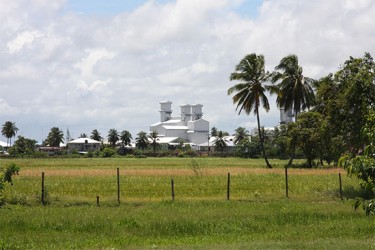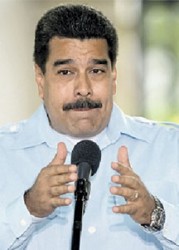Up to earlier this week, the Government of Guyana had not provided a response to the warning from the International Monetary Fund (IMF) that the much-vaunted PetroCaribe Agreement between Venezuela and several Caribbean countries—under which the latter receive oil from Caracas under various concessionary arrangements—might stand imperiled in the face of plummeting global oil prices. There were signs, however, that the warning had not gone unnoticed by the authorities here.
On Monday, the Guyana Rice Development Board (GRDB) the state-run entity that oversees the delivery of rice and paddy to Caracas under the agreement responded to an inquiry by this newspaper by talking up its efforts to further broaden the base of the country’s international rice market. It was the board’s indirect way of saying that it was not indifferent to the difficult circumstances in which the PetroCaribe Agreement finds itself and how that could impact on the local rice industry. The point about excessive dependence on any one market had been made to the Stabroek Business by GRDB General Manager Jagnarine Singh in separate interviews earlier this year in responding to questions on the country’s efforts to increase its global market share. While Singh has made the point about PetroCaribe’s importance to the rice sector, he has, simultaneously, alluded to the inherent vulnerability of a narrow market base.
The IMF’s urging last week that the region look again at PetroCaribe had come in the wake of plummeting oil prices, a seemingly worsening economic crisis in Venezuela and a concern that political and economic pressures at home might compel President Nicholas Maduro to put an end to an arrangement fashioned by his late predecessor, that was clearly designed to win friends and influence people in the region. The question is whether Maduro’s loyalty to Chavez’s economic diplomacy outweighs his instinct for his own political survival in an environment where he lacks the widespread public popularity which his predecessor enjoyed.


Long before the current oil crisis raised questions about the future of PetroCaribe, the political unrest and economic difficulties which had coincided with Maduro’s accession to office had raised questions about the future of the agreement.
Since then the economic slide has worsened to a point where questions have been raised about Venezuela’s ability to service its debts and while Maduro has hastened to offer assurances to the contrary the issue as to whether he has the political clout to persist in providing what is, in effect a fuel subsidy to PetroCaribe beneficiaries has not gone away.
In Montego Bay, Jamaica, last week, the IMF used its 2014 High Level Caribbean Forum on the Caribbean convened under the theme “unlocking economic growth” to issue a blunt warning to regional PetroCaribe beneficiaries to undertake stress tests in an effort to determine how their economies were likely to fare in the absence of the PetroCaribe ‘prop.’
Venezuela has been by far the major market for Guyana’s rice and paddy accounting for around 60 per cent of total exports in 2010. This year exports to Venezuela will account for approximately 38 per cent of total exports though the overall tonnage to be exported to Venezuela this year (150,000 tonnes of rice and 50,000 tonnes of paddy) far exceeds the 2013 export levels.
This week GRDB Deputy General Manager Ricky Ramraj told Stabroek Business that PetroCaribe notwithstanding, the country’s markets in Europe and Caricom remained “very significant.” He said that this year five additional countries had begun to import rice from Guyana upping the number of importing countries from 26 to 31.
In Europe, Holland and Portugal have together imported more than 21,000 metric tonnes of rice from Guyana this year.
In the hemisphere Panama, Haiti and Brazil have also increased their rice imports from Guyana. Still, the authorities here must be aware that they need time to shift even further away from dependence on the Venezuelan market and that time may not be on their side.









